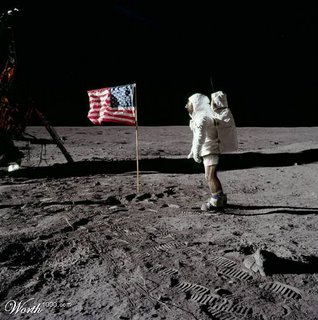Beyond the words
 AIDS Film Festival takes viewers deeper into pandemic
AIDS Film Festival takes viewers deeper into pandemicWith the unfortunate abundance of medical epidemics occurring worldwide in recent decades, it’s sometimes hard for one to decide on which to support. But at the XVI International AIDS Conference, held in Toronto this past August 2006, the expression “seeing is believing” rung true.
Aside from colossal displays of advocacy through concerts, ceremonies and seminars, the Royal Ontario Museum was transformed into a place where both delegates and the general public could immerse themselves into an actual AIDS experience.
The AIDS Film Festival, showcasing a series of documentaries and re-enactments of the disease’s victims, kicked off one day before the opening ceremonies for the Conference.
Prior to the screening of the first film, an eye-catching sculpture featuring the word “AIDS” in large block letters created by the acclaimed Canadian artist collective General Idea was unveiled at the Museum.
The six-foot sculpture, illuminated at night and with bilingual text, was created in 1989 and inspired by Robert Indiana’s LOVE sculpture from 1970.
“By bringing this important sculpture again into public view, we remember that AIDS continues to affect people in Canada and in many other parts of the world,” said William Thorsell, CEO and Director of the Royal Ontario Museum.
But the sculpture only acted as a precursor to what was seen on screen.
Though the first film of the festival boasted a dream Hollywood cast (Stockard Channing, Shawn Ashmore, Chloe Sevigny and Lucy Liu), the most compelling were the roughly cut, shakily edited documentaries, sans sweeping effects and epic music.
One such film was This Is My Sister, created in cooperation with the African Medical and Research Foundation (AMREF). It tells a tale of two siblings living in Nairobi, mainly focusing on Jane, the younger sister.
When Jane realizes that her five-year-old son is infected with tuberculosis, she is prompted to get herself examined for similar diseases, and is told that she has HIV/AIDS. Her sister, Martha, is an uninfected businesswoman striving to make a living by opening her own hair salon and picking rice in local fields. She desperately tries to gain answers and advice from medical counsellors to help Jane but is unsuccessful.
The story follows Jane as she falls deeper into depression, and as Martha continuously tries to pull her out. Jane’s heroic triumph of overcoming her depression at the film’s end was thrilling, satisfying and heartfelt, as viewers are captured by the grim reality of having to cope with a loved one’s fatal disease and innately hoping that he or she will continue to battle for her life.
Dr. Daraus Bukenya, AMREF’s HIV Programme Leader, said in his closing statement that the series of events at the Conference, including the film festival, was to remind people that for HIV interventions to work, everyone must first “Understand Africa”, the organization’s ongoing theme.
“Understand Africa” went alongside this year’s Conference motto, “Time to Deliver”, which both summed up the event in its entirety.
The film following This is My Sister, was the gruesome, yet equally heartwrenching, documentary No Past to Speak Of: A Story of Infant Rape in South Africa.
No Past to Speak Of was one of those films you couldn’t bear to watch, and yet somehow you couldn’t bring yourself to stop watching. It follows the life of American Claudia Ford, who becomes appalled when arriving in Johannesburg and learns about the act of infant rape in the city. Upon discovering this gruesome crime, she adopts Vyanna, who was raped at an unbelievable age of five months.
Ford journeys through the years delving into the realms of this violent, yet common, crime in South Africa, interviewing local medical officials and social workers. She learns that infant rapists are plagued with the idea that sex with young individuals can cure HIV/AIDS, and the chances of a cure depends on how young their sexual partners are.
Though the film doesn’t graphically depict the act of infant rape, describing actions through dialogue was enough to immerse the viewers into an extremely dark, often frightening, and unavoidably honest perspective of AIDS.
Both of these films, along with the star-studded 3 Needles and the rest of the documentaries, accentuated and further proved what the Conference’s main objective is: for the world to understand the graveness of this disease and to gather voices to help fight against it.
The next International AIDS Conference will be held in Mexico City from August 3 to 8, 2008. For more information on the XVII International AIDS Conference in 2008, please keep checking back to the International AIDS Society website at www.iasociety.org
Photography: African Medical and Research Foundation
Source: SceneandHeard.ca, Volume 6 Issue 6







































